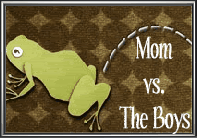So three weeks later here I am with some things that worked for me.
- I picked up a jar of diatomaceous earth at a local garden centre. It's a white powder that you sprinkle on the dirt, made up of tiny sharp crystals that are harmless to humans and birds but cut up slugs and cutworms when they crawl across them. Granted, this stuff can't be good for earthworms, but the worms will return. The cutworms die within 48 hours of crawing across it. Note: you do have to do this more than once throughout the cutworm season (here it's May through June) as the diatomaceous earth seems to dilute enough from rain that it's not enough to do any damage to them. The jar I bought was $9 (Canadian of course) and should last me maybe three years, if they're as bad every year as they have been this year.
- The garden centre guy had another great suggestion. He said to pick up some large plastic drinking straws, slit them up the side, cut them to about 2-4" lengths (depending on how tall your plants' stems are from soil to lowest leaves) and snap them over the stems at the soil level, pressing them down into the soil until you feel resistance at the root. We went to a bubble tea place which has nice fat plastic straws and grabbed a few with our drinks (love bubble tea!). A few minutes with scissors in the garden and the plants were all sheathed in colourful plastic straws. I must say this is an unusual look for the garden but has truly saved many of our surviving plants (and the replants to replace ones the cutworms killed).
- I put a shallow dish in the garden (a clay plant pot base), about 3/4" deep. I settled it into the soil so the lip was even with the soil. I did notice some cutworms each morning had wandered in it and died in there because they couldn't get out. I left it dry with this result, on nights that it rained (or we watered) and the dish was full of water, again more dead cutworms in it. So it doesn't matter if it's full of water or dry. However this will only get rid of a few at a time and in a plague situation like we had it's not really enough on its own.
- Putting cardboard collars around plants to try to deter the cutworms. Apparently they just don't have the gumption to climb walls to get to food. Theoretically, you create a collar of cardboard (my mother uses cut up cereal boxes, I tried paper towel rolls) and shove it into the dirt an inch or so as the cutworms travel quite easily and happily just under the soil surface. For me this didn't work but perhaps my collars were too small or I did a lousy job. My mother swears by it.
I really hope this helps someone else out as I know I was completely enraged and frustrated myself when I woke up to discover the destruction that had befallen my new vegetable garden overnight. Swearing ensued! But $15 bucks later ($9 for the D.E. and $6 for the delicious bubble teas and extra straws) we have our garden back to normal. That's not counting the plants we had to replace but next year we will be using these tricks as soon as we plant, not waiting for the destruction.
Good luck and happy gardening!




























I have heard so much about diatomaceous earth. I guess you can put it inside your chicken coop (in the tray that holds the wood shavings). I can't remember what exactly it does - but it doesn't hurt the chickens and it helps break down the compost litter faster.
ReplyDeleteNow, that you mention that its good for the garden - I might have to do some more research on this stuff. I've only been able to find 50 pound bags at all the local feed stores. I might need to just go to Fred Meyers or some place small.
50 pounds is a LOT! The jar I got is maybe 1.5 lbs. Then again I paid $9 for it and it's probably way cheaper in bulk. I found it at an independent garden centre (the larger superstore type garden centres haven't got a clue what it is, at least in my area). Good luck!
ReplyDelete